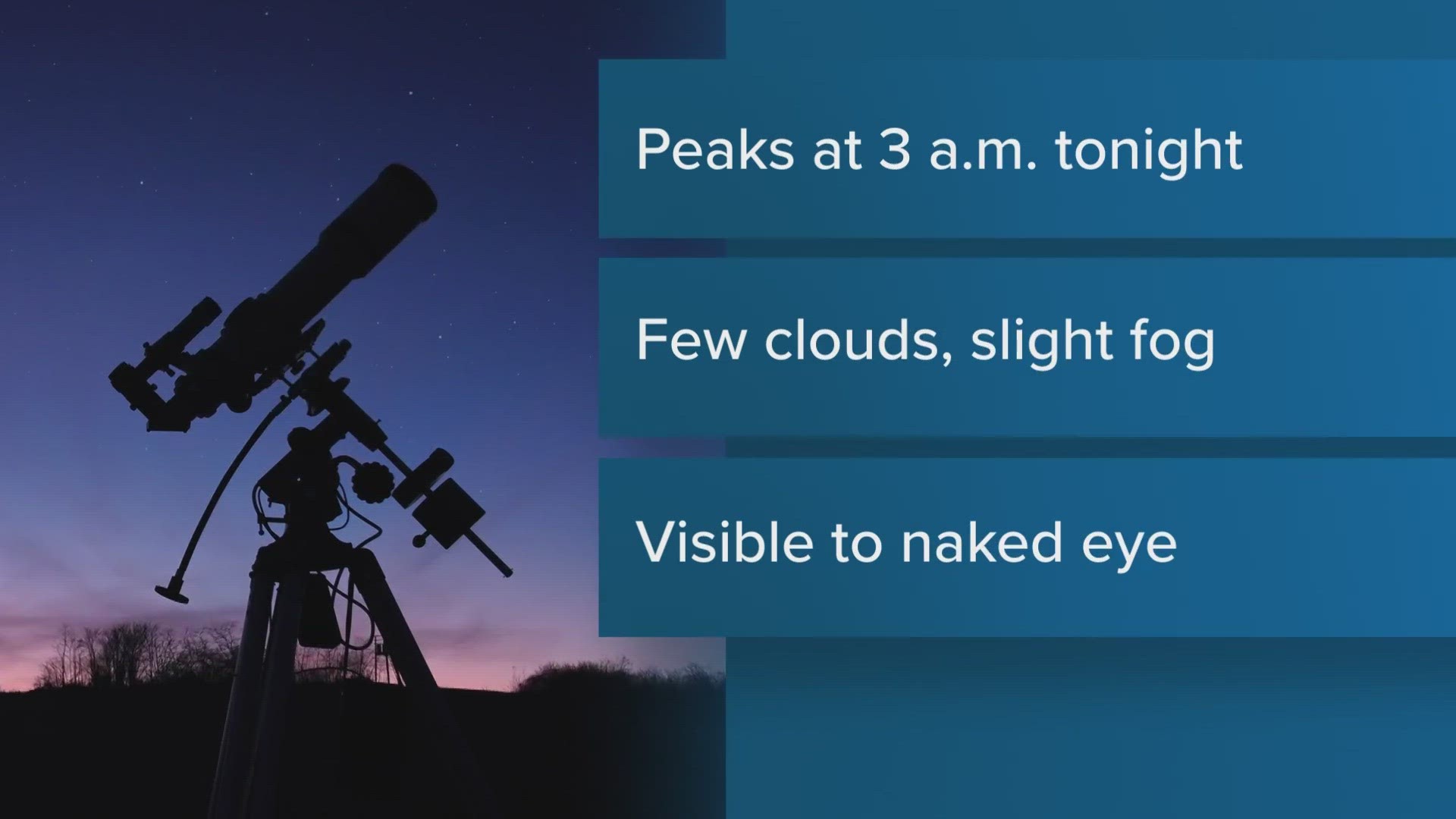TEMPLE, Texas — Skywatchers will have a chance to witness a celestial spectacle this January, as the Quadrantid meteor shower peaks in the first few days of 2024.
According to timeanddate.com and Space.com, the annual shower is expected to peak on the night of Wednesday, Jan. 3 into the morning of Jan. 4. While the shower lasts from Dec. 28 to Jan. 12, Space.com says around 3 a.m. Central Time on Jan. 4 will be the best time to spot meteors.
According to Space.com, conditions for the Quadrantid shower are expected to be better in 2024 than they were in 2023, with a crescent moon being at only 47% illumination. Weather conditions will depend on location, but if skies are clear, there should be less moonlight to interfere with the shower.
Space.com says the best way to spot meteors is by looking north to find the Big Dipper constellation, then following its "handle" to the star Arcturus, which is in the bottom of the constellation Bootes.
Meteors will be visible throughout the night sky, according to Space.com, but the Bootes constellation is considered the "radiant" of the shower, or where the meteors appear to come from.
Space.com recommends looking between other nearby constellations to spot the meteors, as those closer to the radiant may have shorter trails and be more difficult to spot, while more "spectacular" meteors may be seen further away from the radiant.
As long as skies are clear, stargazers should not need any special equipment to see the meteors from the Quadrantid shower, but for the best viewing, it is recommended to watch from the darkest available place while watching as much of the sky as possible.
The name of the Quadrantid meteor shower is a somewhat unique one. Most meteor showers are named for the constellation they appear to originate from, but in the case of the Quadrantid shower, its namesake constellation, the Quadrans Muralis, no longer exists, according to Space.com, and is instead now considered part of the constellation Bootes.
The Quadrantid shower is produced when the Earth passes through the debris trail of ice and dust left by asteroid 2003 EH1, which according to Space.com is believed to be an extinct comet.
Central Texas is expected to have some cloud cover the night of the shower's peak, but those interested in watching the shower can find more information on forecasted weather conditions for Jan. 3 at this link.
More space stories from 6 News:

